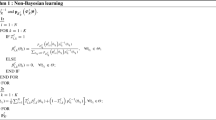Abstract
In autonomous wireless networks, distributed and efficient partner selection is critical for fully realizing the benefits of cooperative communications. However, the selfish nodes in the networks bring catastrophe for partner selection when implementing cooperative transmissions. In order to stimulate cooperation and achieve distributed partner selection for such systems, an auction-based pricing scheme that considering efficiency and fairness is proposed in this paper. Two most prevalent auction forms, i.e., the second-price auction and the first-price auction, are both considered and analyzed in the single- and multiple-relay networks. In the single-relay scenario, the Nash equilibrium strategy for each auction is characterized, based on which the expected payoff and revenue for the source and relay are derived, respectively. Conclusions show that the same expected payoff is charged for the source with different auction schemes, and so is the expected revenue for the relay. Nonetheless, things are different in the multi-relay networks. With the linear 0–1 integer programming models, it is concluded that the first-price auction is more efficient than the second-price auction. Numerical results and analysis present that the proposed auction scheme efficiently solve the noncooperation issues of selfish nodes in autonomous wireless networks.












Similar content being viewed by others
Notes
We write \(F{{(x)}^{N}}\) to denote \({{\left( F(x) \right) }^{N}}.\)
References
Sendonaris, A., Erkip, E., & Aazhang, B. (2003). User cooperation diversity-part I and part II. IEEE Transactions on Communications, 51(11), 1927–1948.
Nosratinia, A., Hunter, T. E., & Hedayat, A. (2004). Cooperative communication in wireless networks. IEEE Communications Magazine, 42(10), 74–80.
Laneman, J. N., Tse, D. N. C., & Wornell, G. W. (2004). Cooperative diversity in wireless networks: Efficient protocols and outage behavior. IEEE Transactions on Information Theory, 50(12), 3062–3080.
Almawgani, A. H. M., & Salleh, M. F. M. (2011). Partner coupling algorithm for mobile coded cooperation technique. The 17th Asia Pacific Conference on Communications, (pp 659–664). doi:10.1109/APCC.2011.6152890.
Benjillali, M., & Alouini, M. S. (2013). Partner cooperation with decode-and-forward: Closed-form outage analysis and comparison. IEEE Transactions on Vehicular Technology, 62(1), 127–139.
Tang, Z., Wang, H., & Hu, Q. (2013). An energy-efficient relay selection strategy based on optimal relay location for AF cooperative transmission. Journal of Wireless Information Networks, 20(4), 355–364.
Baidas, M. W., & Afghah, M. M. (2015). A matching-theoretic approach to energy-efficient partner selection in wireless networks. 2015 International wireless communications and mobile computing conference (IWCMC), (pp. 1260–1265). doi:10.1109/IWCMC.2015.7289263.
Lin, Y., Li, B., Yin, H., & He, Y. Z. (2015). Throughput-efficient online relay selection for dual-hop cooperative networks. KSII Transactions on Internet and Information System, 5(6), 2095–2110.
Tian, L., Li, M., Sun, W., Zhao, X., Wang, B., & Ma, J. (2012). Evolution of cooperation based on reputation on dynamical networks. 2012 IEEE 11th international conference on trust, security and privacy in computing and communications, (pp. 1399–1404). doi:10.1109/TrustCom.2012.156.
Zhang, N., Lu, N., Lu, R., Mark, J. W., & Shen, X. (2012). Energy-efficient and trust-aware cooperation in cognitive radio networks. 2012 IEEE international conference on communications (ICC), (pp. 1763–1767). DOI:10.1109/ICC.2012.6364434.
Ni, X., Chen, H., Xie, L., & Wang, K., (2013). Reputation-based hierarchically cooperative spectrum sensing scheme in cognitive radio networks. 2013 IEEE/CIC International conference on communications in China (ICCC), (pp. 397–402). doi:10.1109/ICCChina.2013.6671149.
Suman, S. K., Porselvi, S., Bhagyalakshmi, L., & Kumar, D. (2014). Game theoretical approach for improving throughput capacity in wireless ad hoc networks. 2014 International conference on recent trends in information technology (ICRTIT), (pp. 1–6). doi:10.1109/ICRTIT.2014.6996152.
Zhang, C., Zhao, H., & Jia, M. (2014). A pricing-based cooperation bandwidth allocations algorithm using non-cooperative game theory. 2014 12th international conference on signal processing (ICSP) (pp. 2379–2384). doi:10.1109/ICOSP.2014.7015420.
Rahmati, A., & Shah-Mansouri, V. (2015). Price-based power control in relay networks using Stackelberg game. 2015 23rd Iranian conference on electrical engineering, (pp. 263–267). doi:10.1109/IranianCEE.2015.7146221.
Stanojev, I., Simeone, O., Spagnolini, U., Bar-Ness, Y., & Pickholtz, R. L. (2010). Cooperative ARQ via auction-based spectrum leasing. IEEE Transactions on Communications, 58(6), 1843–1856.
Mukherjee, A., & Kwon, H. M. (2010). General auction-theoretic strategies for distributed partner selection in cooperative wireless networks. IEEE Transactions on Communications, 58(10), 2903–2915.
Liu, Y., Tao, M., & Huang, J. (2013). An auction approach to distributed power allocation for multiuser cooperative networks. IEEE Transactions on Wireless Communications, 12(1), 237–247.
Lim, H. J., Song, M. G., & Im, G. H. (2013). Cooperation-based dynamic spectrum leasing via multi-winner auction of multiple bands. IEEE Transactions on Communications, 61(4), 1254–1263.
Zou, J., Wu, Q., Xiong, H., & Chen, C. W. (2014). Joint spectrum and power auction with multiauctioneer and multibidder in coded cooperative cognitive radio networks. IEEE Transactions on Wireless Communications, 13(10), 5768–5780.
Krishna, V. (2002). Auction theory. London: Academic Press.
Osborne, M. J. (2003). An introduction to game theory. Oxford: Oxford University Press.
Hillier, F. S., & Lieberman, G. J. (1995). Introduction to operations research (6th ed.). New York: McGraw Hill.
Acknowledgements
This work is support by the National High Technology Research and Development Program of China (863 Program, No. 2014AA01A704, 111 Program, No. B08038), the National Nature Science Foundation of China (61372067, 61371112, 61371113, 61401241).
Author information
Authors and Affiliations
Corresponding author
Rights and permissions
About this article
Cite this article
Ma, B., Ge, J., Han, W. et al. Auction-Based Pricing Schemes for Distributed Partner Selection in Cooperative Wireless Networks. Wireless Pers Commun 96, 265–290 (2017). https://doi.org/10.1007/s11277-017-4166-7
Published:
Issue Date:
DOI: https://doi.org/10.1007/s11277-017-4166-7




